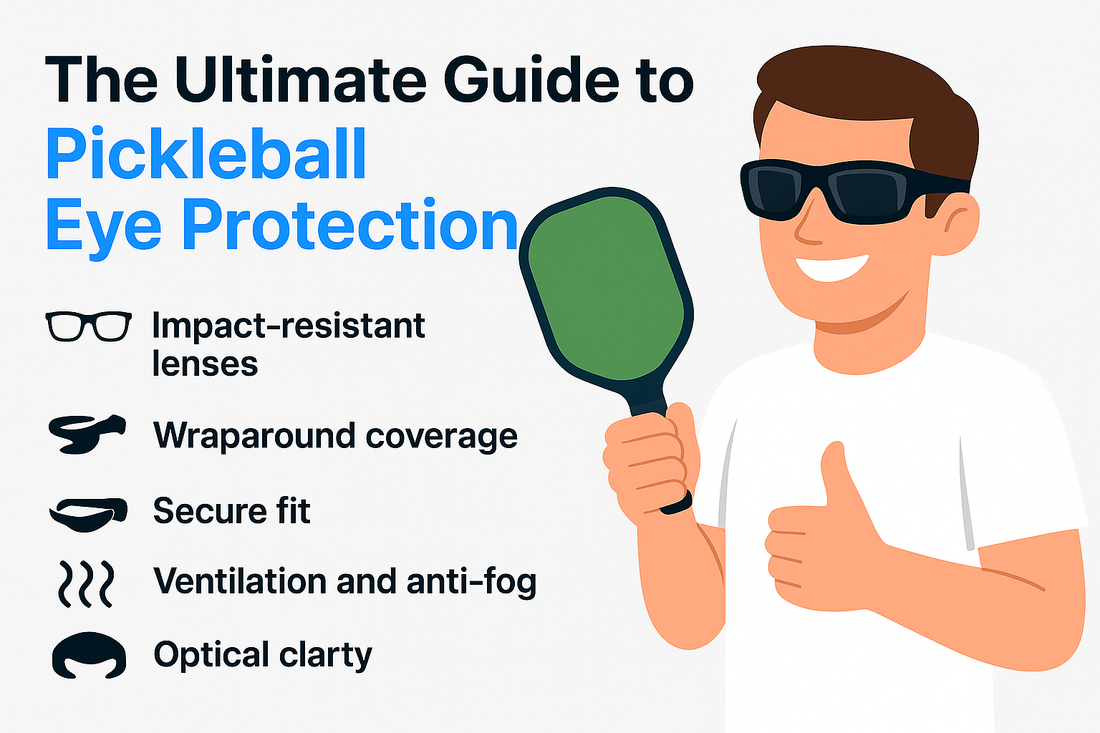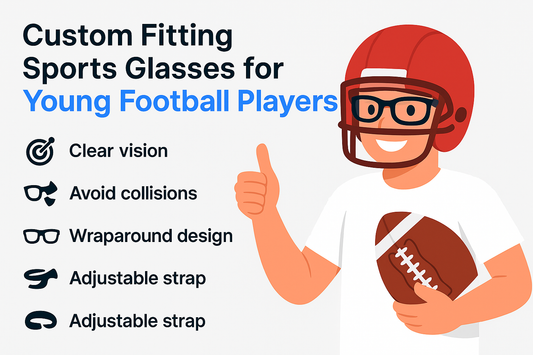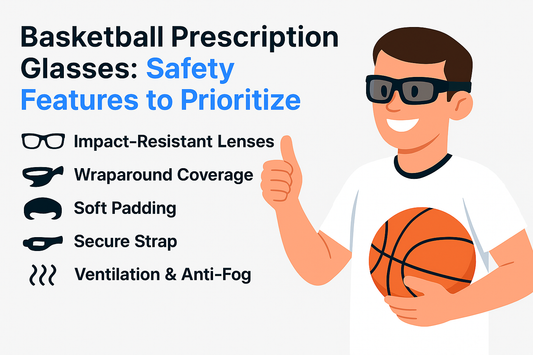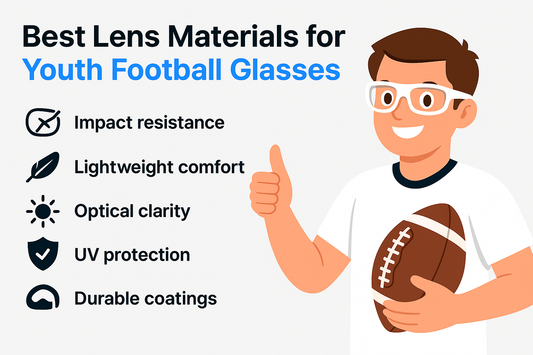
The Ultimate Guide to Pickleball Eye Protection
You protect your paddle and shoes—so why not your eyes? Pickleball is fast, social, and seriously addictive, but an errant plastic ball or a swing of a paddle can put your vision at risk. The right eyewear keeps you sharp on every rally and shields your eyes from impact, glare, and dust. Consider this your court-ready guide. 😎
Why eye protection matters in pickleball
Between quick dinks at the kitchen line and sudden drives, the ball can find your face faster than you expect. Protective glasses or goggles create a barrier against impacts, prevent corneal abrasions, and help you track the ball with better contrast. If you frequently play outdoors, you’ll also want UV protection to cut glare and protect long-term eye health. 👀
What to look for in pickleball glasses
- Impact-resistant lenses: Choose polycarbonate or Trivex lenses. They’re lightweight, tough, and offer built-in UV protection.
- Wraparound coverage: A curved, close-to-face profile blocks peripheral shots, wind, and debris.
- Secure fit: Look for rubberized nose pads and temple tips. A removable strap can keep frames stable through quick direction changes.
- Ventilation and anti-fog: Lens vents and anti-fog coatings help keep your view clear when the game heats up.
- Optical clarity: Lens quality matters. If you need correction, consider prescription-ready sports frames.
- Scratch and smudge resistance: Hard coatings and hydrophobic layers make cleaning easy and extend lens life.
Lenses: clear, tinted, or photochromic?
The best lens depends on where and when you play. Indoors with consistent lighting? Clear lenses are your all-around pick. Bright outdoor courts call for tinted or mirrored lenses to tame glare and enhance contrast. Photochromic lenses adapt to changing light, a versatile choice if you move between shade and sun. For outdoor play, look for full UV400 protection. ☀️
Fit and comfort tips
- Size and seal: Frames should sit snug without pinching. A gentle wrap that doesn’t touch your lashes is ideal.
- Nose bridge: Adjustable pads help center the lenses for crisp vision and reduce slipping during quick stops.
- Temple grip: Flexible, rubberized temples or a sport strap keep glasses planted during volleys and overheads.
- Helmet/hat compatibility: If you wear a cap or visor, check that the temples sit comfortably underneath.
Care and maintenance
- Rinse lenses with clean water after dusty or sweaty play. Avoid dry-wiping to prevent micro-scratches.
- Use a microfiber cloth and lens-safe cleaner for streak-free clarity.
- Store in a hard case between matches to protect the shape and coatings.
- Replace lenses or frames if you notice deep scratches or a compromised fit.
Common myths, debunked 🏓
- “Regular sunglasses are enough.” Fashion shades often lack impact resistance and secure fit. Sports eyewear is engineered for court play.
- “I’m a beginner, so I don’t need them.” Most accidental hits happen at the net and during mixed skill play. Protection matters at every level.
- “Anti-fog never works.” Proper ventilation plus a quality anti-fog coating and clean lenses significantly reduce fogging.
FAQs
How do I choose lenses for indoor vs. outdoor pickleball?
Use clear lenses indoors and tinted or mirrored lenses outdoors to reduce glare. Photochromic lenses are great if you switch environments.
What features make sports glasses safe for pickleball?
Impact-resistant lenses, wraparound coverage, a secure fit with rubberized contact points, and anti-fog ventilation are key.
Can I get prescription lenses in sports frames?
Yes. Many sports frames accept prescription lenses or inserts, giving you clear, corrected vision without sacrificing protection.
Do anti-fog coatings really work?
They help a lot when paired with good ventilation and proper cleaning. Keep lenses clean and avoid touching the inner surface.
Why are wraparound frames recommended?
They protect your peripheral vision from stray shots and wind while improving stability and field of view.



